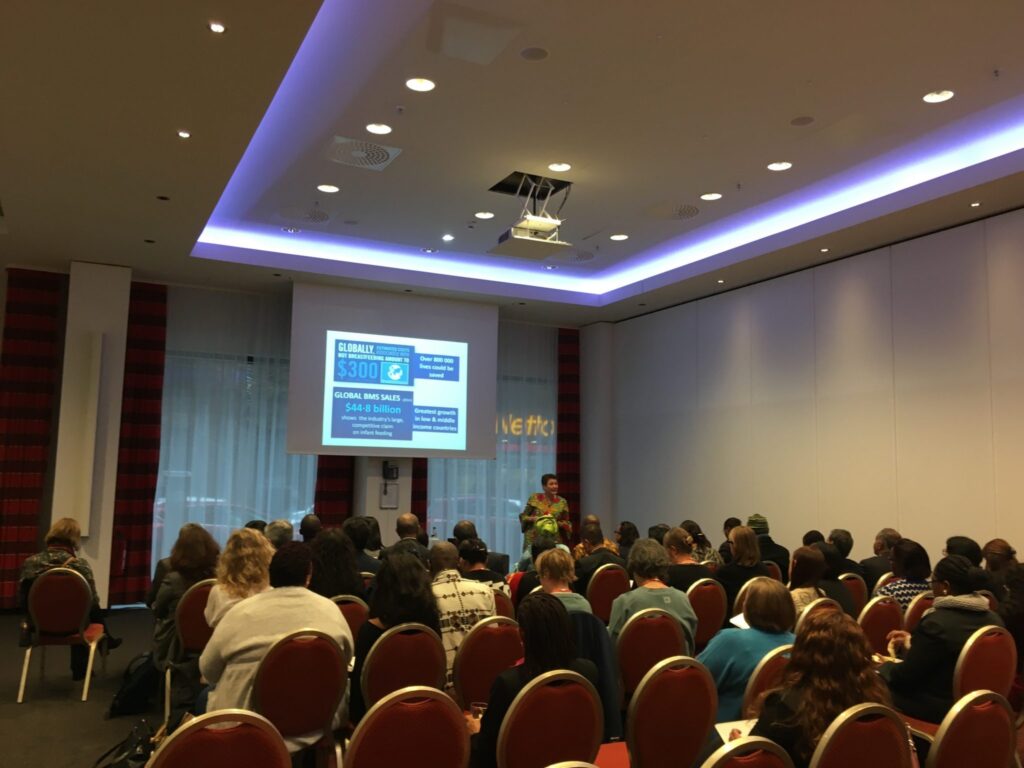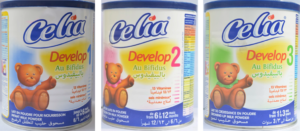Breastmilk is the gold standard for infant and young child feeding. The World Health Organization (WHO) and UNICEF recommend that children be exclusively breastfed for the first six months and continue to receive breastmilk up to two years of age or beyond. Yet, the proliferation of varying breastmilk substitutes, including follow-up formula, increasingly undermines exclusive and continued breastfeeding.
Why is defining follow-up formula as a breastmilk substitute important for infant and young child feeding across the world? When follow-up formula is introduced, breastfeeding mothers either reduce the number of breastmilk feedings a day or stop breastfeeding altogether.
The WHO recently published an information note clarifying that follow-up formula (in other words, milk products specifically marketed for feeding infants and young children up to three years of age) is a breastmilk substitute. This means that follow-up formula falls under same marketing guidelines as infant formula and that companies are required to comply with the WHO International Code of Marketing of Breast-milk Substitutes.
Why is defining follow-up formula as a breastmilk substitute important for infant and young child feeding across the world? When follow-up formula is introduced, breastfeeding mothers either reduce the number of breastmilk feedings a day or stop breastfeeding altogether. Thus, while the composition of follow-up formula differs from that of infant formula, its function ends up being the same – it replaces the intake of breastmilk in young children rather than complements it. Furthermore, the packaging and labelling of follow-up formula often resemble that of infant formula, potentially leading to its misuse for feeding younger infants and posing significant health risks since it is not formulated to meet the needs of this age group.
This November brought an important next step in ensuring that the marketing of follow-up formula does not discourage or interfere with breastfeeding of infants and young children. Codex Alimentarius, a joint body of the Food and Agricultural Organization and WHO, develops harmonized food standards guidelines and codes of practices which are used by many country governments. The ARCH team has been active in the revision of the Codex Alimentarius Standard for Follow-Up Formula, advocating with country representatives to make sure that this food standard consistently defines and regulates follow-up formula as a breastmilk substitute. The 2018 meeting of the Codex Committee on Nutrition and Foods for Special Dietary Uses was held in Berlin, Germany from November 26 to 30. Our team and partners saw some major achievements for the protection, promotion and support of breastfeeding:
- Follow-up formula for children 6-12 months of age will now be defined as “… a product manufactured for use as a breastmilk substitute, as a liquid part of a diet for older infants when progressively diversified complementary feeding is introduced.”
- The following messages will now be required on the labels of follow-up formulas for children 6-12 months of age:
- A statement that “Breast-milk is the best food for your baby” should be included.
- Also “The use of this product should not lead to cessation of continued breastfeeding.”
- Also, there must be no pictures of infants, young children and women nor any other picture or text that idealize the use of them, suggest use for <6 months, recommend/promote bottle feeding, undermine or discourage breastfeeding, that makes a comparison to breast-milk, or suggests that the product is similar, equivalent to or superior to breast-milk.
- No endorsements are allowed
- Text was also added to the standard for follow-up formula for children 6-12 months of age to address and prevent cross promotion with other types of products.
These are important successes, but there is ongoing work needed to ensure that these same requirements are included for follow-up formula for children 12-36 months of age. We will continue working alongside country representatives and other breastfeeding advocates, including IBFAN/IACFO, ILCA, Save the Children, Alive & Thrive and 1000 days, to make sure that happens.
We will continue to provide updates on next steps in this important policy effort.
Learn more about our work to implement The International Code of Marketing of Breast-milk Substitutes.


